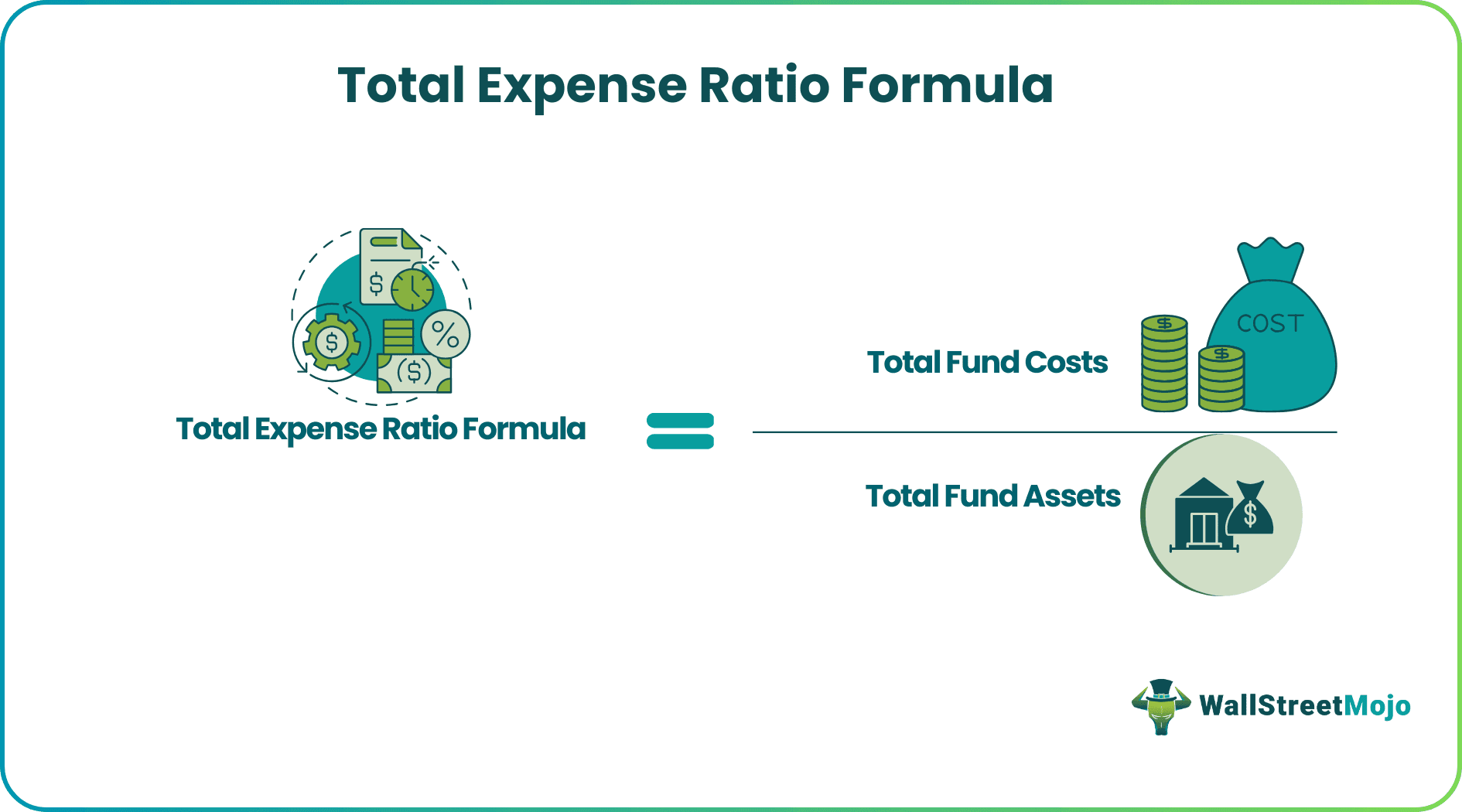Total Expense Ratio Formula | TER Calculator (with Excel Template)
Table Of Contents
Total Expense Ratio Formula
No, it's not enough to know the return on the investments; it's also important to know the total expense ratio. The total expense ratio (TER) formula is used for investment funds. The TER formula is very useful for investors because it shows them how much they have earned.
Here’s the TER Formula –
Total Expense Ratio = Total Fund Costs/Total Fund Assets

Key Takeaways
- The total expense ratio is the cost of investing in a fund, including fees and operational expenses. It helps investors calculate their final return.
- The main reason the total expense ratio is essential to investors is that it directly affects the returns on their investments.
- The actual expense ratio formula increases when a fund is actively managed due to rising operational expenses.
- The total expense ratio is lesser if the fund is not actively managed. And return may also dry up. However, there are always exceptions.
Example of TER Formula
Let’s take a simple example to illustrate the TER formula.
Binary Investments have been managing a new fund. It has the following information regarding its new fund –
- Total fund costs - $40,000
- Total fund assets - $410,00,000
Find out the TER of this new fund.
We know both the total fund costs and the total fund assets.
By using the TER formula, we get –
- TER = Total Fund Costs / Total Fund Assets
- Or, TER = $40,000 / $410,000,000 = 9.76%.
The investors need to see the Total Expense Ratio of this new fund and then compare the same with other investments to see whether this is a worthy investment for the investors or not.
Total Expense Ratio Example - Vanguard
As we can see from the below table, the TER of Vanguard funds range from 0.11% to 0.16%

source: vanguard.com
The Federal Money Market Fund has an expense ratio of 0.11%, whereas the California Municipal Money Market Fund has an expense ratio of 0.16%.
Explanation of TER Formula
Understanding TER is important. It has two components.
- The first component is the total fund costs. Total fund costs mainly include management fees. Total fund costs also include legal fees, trading fees, operation expenses, and auditing fees.
- The second component of the TER is the total fund assets. In the case of any investment funds, a group of people manages the funds. And these funds are the assets of individuals who have invested in the instrument (e.g., mutual funds). These funds are called fund assets. In simple terms, fund assets are the market value of the funds managed by a fund manager or a management team.
When we compare the fund expenses and the fund assets, we get a proportion of expenses in terms of assets. This TER can be used to find out how many expenses happen.
Use of TER Formula
The main reason for which TER is important to investors is that TER directly affects the returns on their investments.
For example, let’s say that Mr. Rout has invested in a portfolio. He is expecting a return of 10% on his investments. Now, if he can find out the TER, he will get to figure out the actual return on his investments. Let’s say that the TER is 4%; then, the net return would be 6%, even if it seems that he is getting a return of 10% on his investments.
TER formula is more when the fund is actively managed; when the fund is actively managed, the operational expenses of the fund increase. For example, if a fund is actively handled, the personnel costs will likely go up. Actively managing a fund may also ensure a higher return and a quick reaction time.
On the other hand, the TER is lesser if the fund is not actively managed. And return may also dry up. However, there are always exceptions.
TER Formula in Excel (with excel template)
Let us now do the same example of the TER formula in Excel.
It is very simple. You need to provide the two inputs of Total Fund Costs and Total Fund Assets.
You can easily calculate the ratio in the template provided.


